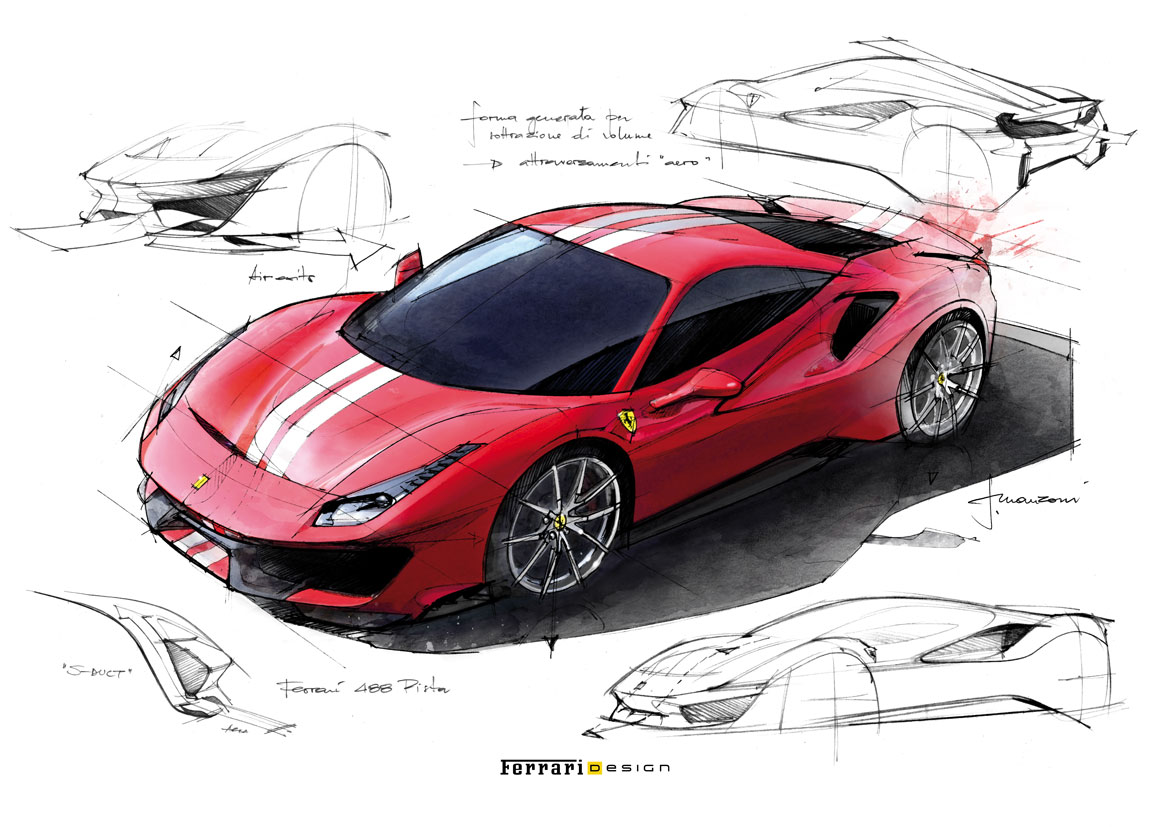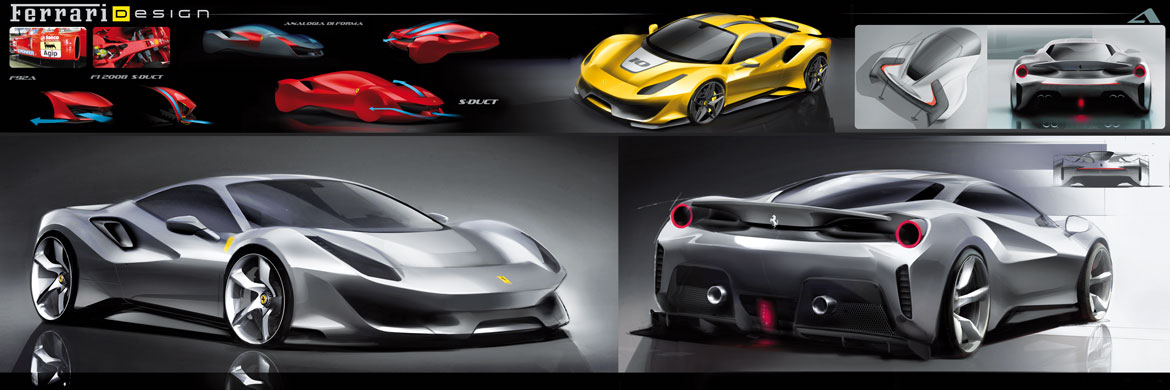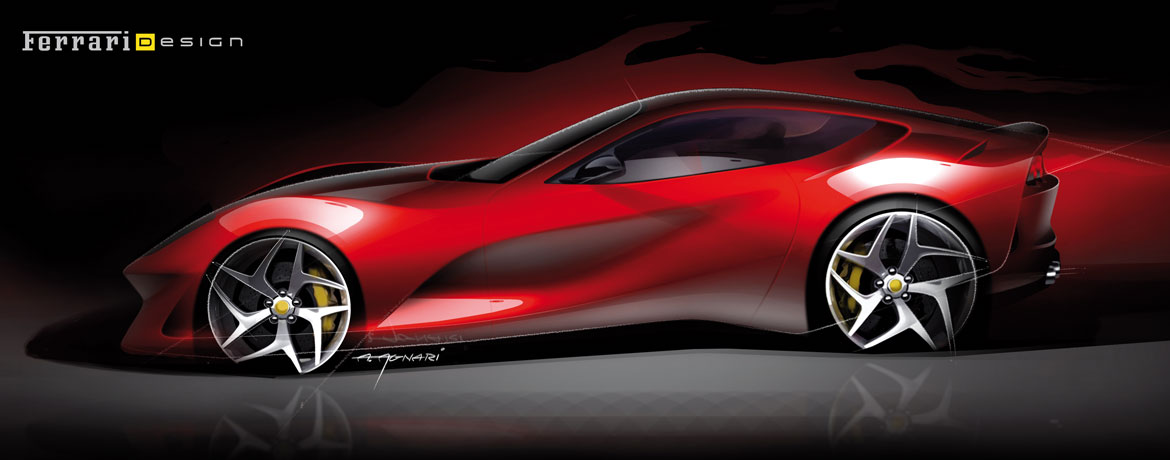Red and violently beautiful. The 812 Superfast and 488 Pista supercars make their appearance, as magnificent as ever, within the confines of a Style Centre, like two top athletes proudly announcing their ambition to excel, albeit in different disciplines. Both wear liveries whose admirable overall neatness is torn by formal protrusions (slits, spoilers, aerodynamic trim) capable of dramatically evoking the sphere of performance, sometimes even tapping into the world of racing.
“At Ferrari, every car pursues a specific objective”, says Flavio Manzoni, head of Maranello’s styling since 2010. “In GTs, visual unity tends to be greater, with the lines flowing free and seamlessly, while still respecting the need to manage air flows. When it comes to the high performance range, on the other hand, technical requirements take the upper hand and design becomes to some extent more complicated, but also more interesting. It’s a challenge for us”.
Deployed under neon lights like standard bearers of the best Italy has to offer, the most powerful production 12-cylinder ever and the extreme variant of the “small” V8 are there to prove it. “For the 812, the main issue was to remodulate the F12’s peaks of elegance, which part of the management considered excessive. In essence, we were asked to make the car nastier,” said Andrea Militello, Lead Exterior Designer.
“The intention was to demonstrate that even a car with classic architecture and a large front engine could prove to be more aggressive than the competition. For this reason, the side panel tended to dynamise the volumes: today they seem more compact thanks to lines that here we say take a nosedive, namely slope sharply down to the differently connected C pillar and to the shorter tail”.
The predecessor’s Aero Bridge at the front disappears, however: “The logic changes completely, because here we do not like to repeat forms that have already been seen”, smiles Alberto Agnari, Exterior Designer. “The composite front air intake embraces a whole host of functions, from radiator cooling, in the centre, to the engine intake, at the corners”.
“To direct flows towards the brakes, some parts of the grille are brought into service again, but above all the two openings next to the headlights are used, the perimeter of which heads downwards to create a veritable graphic motif. Overall, the architecture of the nose has been completely redesigned”. On the tail, then, the swirling air is fragmented between the by-pass on the mudguards (reducing lift), the active extractor and rear window separated from the small overhang where the spoiler is located, which is thus more effective.
Full article in Auto&Design no. 231
















